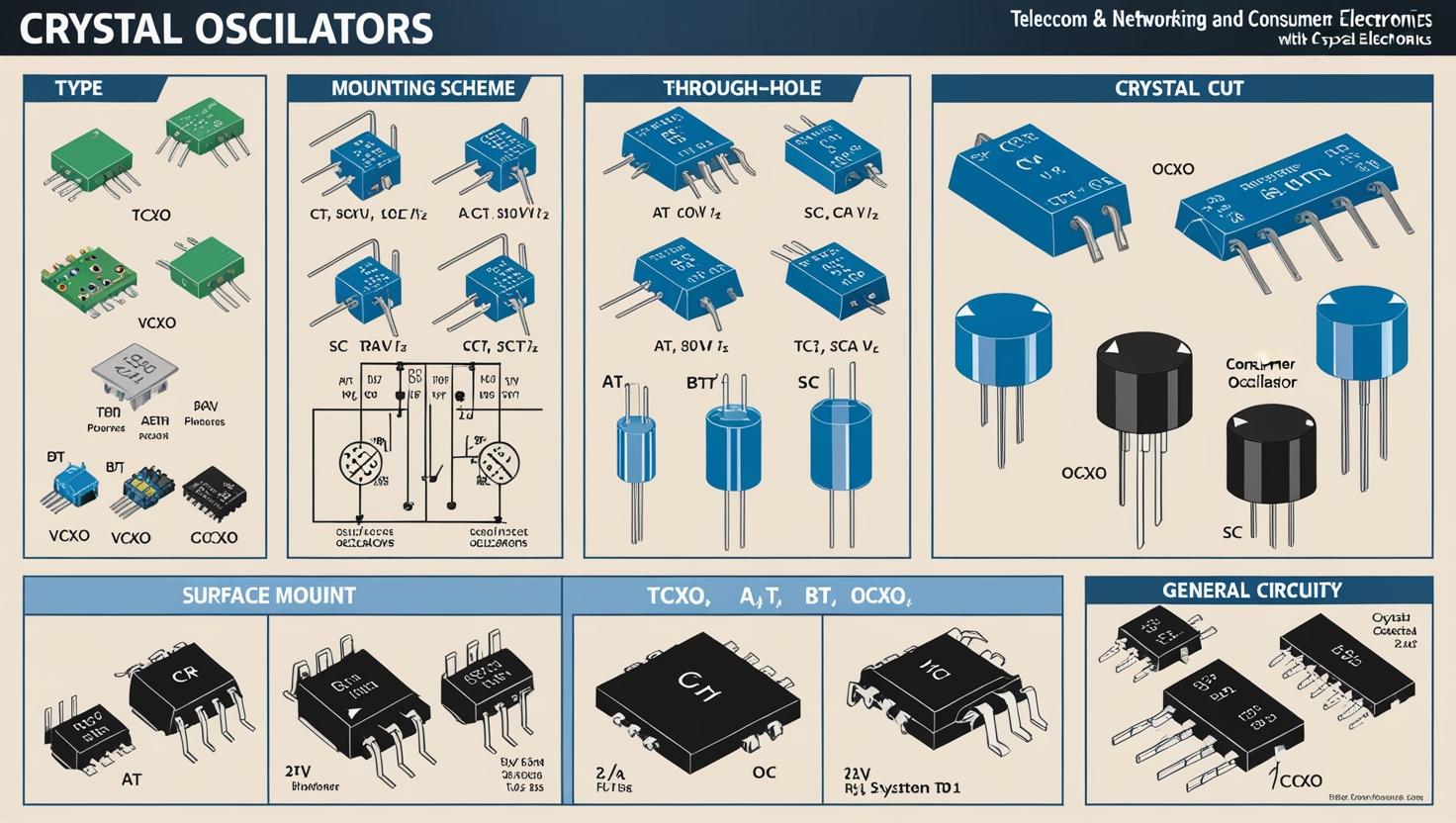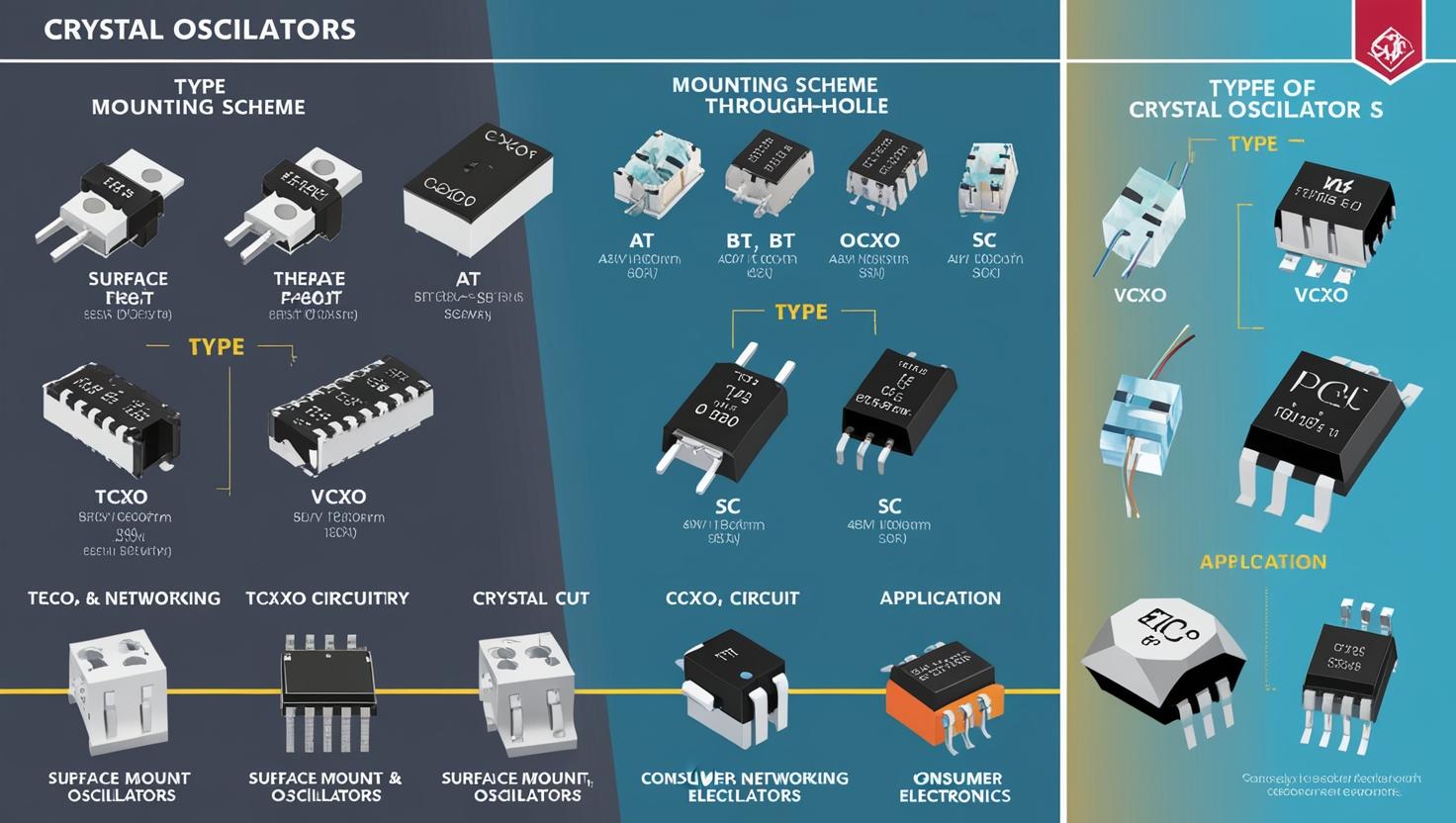In today’s fast-paced digital world, precision timing is essential to the functioning of countless electronic devices, from smartphones and computers to automotive systems and telecommunications infrastructure. At the heart of these systems lies the crystal oscillator—a key component that enables accurate frequency generation and synchronization. Behind this small yet crucial part are the crystal oscillator manufacturers, whose innovations and engineering drive the accuracy, stability, and reliability of modern electronics.
A crystal oscillator is an electronic circuit that uses the mechanical resonance of a quartz crystal to generate a precise frequency. Quartz crystals are piezoelectric, meaning they produce an electrical charge when subjected to mechanical stress, and vice versa. This property makes quartz crystals ideal for maintaining consistent and accurate oscillations.
The crystal oscillator operates by applying an electric field to the crystal, which causes it to vibrate at a specific resonant frequency. This frequency is incredibly stable and resistant to temperature changes, making it ideal for applications that require high precision. Crystal oscillators are widely used in clocks, watches, computers, communication systems, GPS devices, and many other applications where timing is crucial.
The Role of Crystal Oscillator Manufacturers
Crystal oscillator manufacturers play a vital role in ensuring that the demand for high-precision timing devices is met. They are responsible for producing a wide range of oscillators designed to meet specific performance criteria, including:
Frequency Stability: High-quality crystal oscillators must maintain consistent output frequency over time, temperature, and environmental conditions. Manufacturers must design oscillators with specific tolerances to meet industry standards for stability.
Miniaturization: With the increasing demand for smaller, more compact electronic devices, crystal oscillator manufacturers have developed miniature oscillators that maintain performance while fitting into ever-decreasing spaces. This is particularly important for consumer electronics like smartphones, wearables, and medical devices.
Customization: Different applications require different frequency ranges, voltage levels, and environmental resilience. Crystal oscillator manufacturers provide customization options to meet the specific needs of industries such as telecommunications, aerospace, automotive, and industrial controls.
Advanced Materials and Technology: To meet the evolving needs of modern electronics, manufacturers continue to innovate with advanced materials and technologies. Some manufacturers are exploring the use of synthetic crystals and thin-film technology to enhance the precision and efficiency of oscillators.
Quality Control: Ensuring the highest standards of manufacturing is essential for crystal oscillator manufacturers. Rigorous testing and quality assurance processes are employed to ensure that each oscillator operates as expected, even in challenging environments.
The global crystal oscillator Industry was valued at USD 3.0 billion in 2023 and is projected to reach USD 3.4 billion by 2028; it is expected to register a CAGR of 2.5%
Download PDF Brochure @ https://www.marketsandmarkets.com/pdfdownloadNew.asp?id=943

Applications of Crystal Oscillators
Crystal oscillators are indispensable in many sectors, supporting technologies that are integral to daily life. Some of the most common applications include:
1. Telecommunications
Crystal oscillators are essential for ensuring reliable signal transmission in mobile networks, satellite communications, and fiber optics. Their precise timing ensures that data is sent and received correctly, minimizing delays and maintaining high-quality communication.
2. Consumer Electronics
In devices like smartphones, tablets, and smartwatches, crystal oscillators ensure that the internal clock functions correctly, maintaining synchronization for processes like data processing, display refresh rates, and wireless communications.
3. Automotive Systems
As the automotive industry embraces increasingly complex electronics, crystal oscillators are used in critical systems such as GPS navigation, infotainment, electronic control units (ECUs), and advanced driver-assistance systems (ADAS). These systems rely on precise timing for navigation, safety features, and real-time communication.
4. Aerospace and Defense
In aerospace, military, and defense applications, crystal oscillators provide the accuracy required for radar systems, satellite communications, navigation, and mission-critical control systems. These applications demand high reliability, making quality manufacturing essential.
5. Medical Devices
Medical devices such as pacemakers, diagnostic equipment, and imaging systems require precise timing to function accurately. Crystal oscillators provide the stability necessary for these life-saving devices, ensuring they perform optimally over time.
6. Industrial Automation
Crystal oscillators are used in automation and control systems in industries such as manufacturing, robotics, and energy production. They provide synchronization and timing for machinery, sensors, and communication networks.
Challenges for Crystal Oscillator Manufacturers
The growing demand for precision timing devices has not come without challenges. Manufacturers must navigate a number of obstacles to ensure their products meet evolving industry standards and demands:
Environmental Factors: Crystal oscillators must operate effectively across a wide range of temperatures, pressures, and humidity levels, particularly in industries like automotive, aerospace, and defense. Manufacturers must account for these environmental factors when designing oscillators that will operate in extreme conditions.
Power Efficiency: As electronic devices become more power-conscious, especially in wearable devices and IoT applications, crystal oscillators must be designed to consume as little power as possible while maintaining high performance.
Size and Integration: The trend toward miniaturization in consumer electronics demands that crystal oscillators be smaller, lighter, and more efficient, all while maintaining their performance and stability. Integration of crystal oscillators into multi-functional chipsets is becoming increasingly common.
Cost Pressure: With competition increasing in the global market, manufacturers are under pressure to reduce costs while maintaining quality. This requires efficient manufacturing processes, innovative material use, and economies of scale.

Future Trends in the Crystal Oscillator Industry
The crystal oscillator market is poised for growth, driven by advancements in technology and increasing demand for high-precision components across industries. Some emerging trends include:
Miniaturization and Integration: The ongoing trend toward smaller, more integrated devices will continue to drive innovation in crystal oscillator design. Manufacturers will focus on developing oscillators that are even more compact without compromising performance.
MEMS-Based Oscillators: Micro-Electromechanical Systems (MEMS) oscillators are gaining traction as alternatives to traditional crystal oscillators. MEMS oscillators offer the potential for even smaller size, lower power consumption, and greater resistance to shock and vibration, making them ideal for mobile and wearable devices.
Automation and AI: The integration of automation and artificial intelligence (AI) into the manufacturing process will enhance precision, efficiency, and quality control in crystal oscillator production, allowing manufacturers to meet growing demand while maintaining consistency.
Sustainability: As the global focus on sustainability grows, crystal oscillator manufacturers will look for ways to minimize waste, reduce energy consumption, and use environmentally friendly materials in production. This shift toward greener manufacturing practices will play a significant role in shaping the future of the industry.Crystal oscillator manufacturers are playing a critical role in powering the future of electronics, providing the precision timing necessary for everything from consumer gadgets to space exploration. With ongoing innovations in design, materials, and production techniques, these manufacturers will continue to meet the demands of increasingly complex and high-tech applications. As industries evolve, the role of crystal oscillators in enabling reliability, accuracy, and efficiency will only become more essential, ensuring that these unassuming components remain at the heart of modern electronics.
The key Manufacturers based in Asia Pacific that offer crystal oscillators include :
- Seiko Epson Corporation (Japan),
- NIHON DEMPA KOGYO CO., LTD. (Japan),
- TXC Corporation (Taiwan)
- , KYOCERA Corporation (Japan), and
- Daishinku Corp. (Japan).
